Yiming Cui
CoReVLA: A Dual-Stage End-to-End Autonomous Driving Framework for Long-Tail Scenarios via Collect-and-Refine
Sep 19, 2025Abstract:Autonomous Driving (AD) systems have made notable progress, but their performance in long-tail, safety-critical scenarios remains limited. These rare cases contribute a disproportionate number of accidents. Vision-Language Action (VLA) models have strong reasoning abilities and offer a potential solution, but their effectiveness is limited by the lack of high-quality data and inefficient learning in such conditions. To address these challenges, we propose CoReVLA, a continual learning end-to-end autonomous driving framework that improves the performance in long-tail scenarios through a dual-stage process of data Collection and behavior Refinement. First, the model is jointly fine-tuned on a mixture of open-source driving QA datasets, allowing it to acquire a foundational understanding of driving scenarios. Next, CoReVLA is deployed within the Cave Automatic Virtual Environment (CAVE) simulation platform, where driver takeover data is collected from real-time interactions. Each takeover indicates a long-tail scenario that CoReVLA fails to handle reliably. Finally, the model is refined via Direct Preference Optimization (DPO), allowing it to learn directly from human preferences and thereby avoid reward hacking caused by manually designed rewards. Extensive open-loop and closed-loop experiments demonstrate that the proposed CoReVLA model can accurately perceive driving scenarios and make appropriate decisions. On the Bench2Drive benchmark, CoReVLA achieves a Driving Score (DS) of 72.18 and a Success Rate (SR) of 50%, outperforming state-of-the-art methods by 7.96 DS and 15% SR under long-tail, safety-critical scenarios. Furthermore, case studies demonstrate the model's ability to continually improve its performance in similar failure-prone scenarios by leveraging past takeover experiences. All codea and preprocessed datasets are available at: https://github.com/FanGShiYuu/CoReVLA
AdapCsiNet: Environment-Adaptive CSI Feedback via Scene Graph-Aided Deep Learning
Apr 15, 2025



Abstract:Accurate channel state information (CSI) is critical for realizing the full potential of multiple-antenna wireless communication systems. While deep learning (DL)-based CSI feedback methods have shown promise in reducing feedback overhead, their generalization capability across varying propagation environments remains limited due to their data-driven nature. Existing solutions based on online training improve adaptability but impose significant overhead in terms of data collection and computational resources. In this work, we propose AdapCsiNet, an environment-adaptive DL-based CSI feedback framework that eliminates the need for online training. By integrating environmental information -- represented as a scene graph -- into a hypernetwork-guided CSI reconstruction process, AdapCsiNet dynamically adapts to diverse channel conditions. A two-step training strategy is introduced to ensure baseline reconstruction performance and effective environment-aware adaptation. Simulation results demonstrate that AdapCsiNet achieves up to 46.4% improvement in CSI reconstruction accuracy and matches the performance of online learning methods without incurring additional runtime overhead.
A Vehicle-Infrastructure Multi-layer Cooperative Decision-making Framework
Mar 19, 2025Abstract:Autonomous driving has entered the testing phase, but due to the limited decision-making capabilities of individual vehicle algorithms, safety and efficiency issues have become more apparent in complex scenarios. With the advancement of connected communication technologies, autonomous vehicles equipped with connectivity can leverage vehicle-to-vehicle (V2V) and vehicle-to-infrastructure (V2I) communications, offering a potential solution to the decision-making challenges from individual vehicle's perspective. We propose a multi-level vehicle-infrastructure cooperative decision-making framework for complex conflict scenarios at unsignalized intersections. First, based on vehicle states, we define a method for quantifying vehicle impacts and their propagation relationships, using accumulated impact to group vehicles through motif-based graph clustering. Next, within and between vehicle groups, a pass order negotiation process based on Large Language Models (LLM) is employed to determine the vehicle passage order, resulting in planned vehicle actions. Simulation results from ablation experiments show that our approach reduces negotiation complexity and ensures safer, more efficient vehicle passage at intersections, aligning with natural decision-making logic.
Prompt-Enabled Large AI Models for CSI Feedback
Jan 18, 2025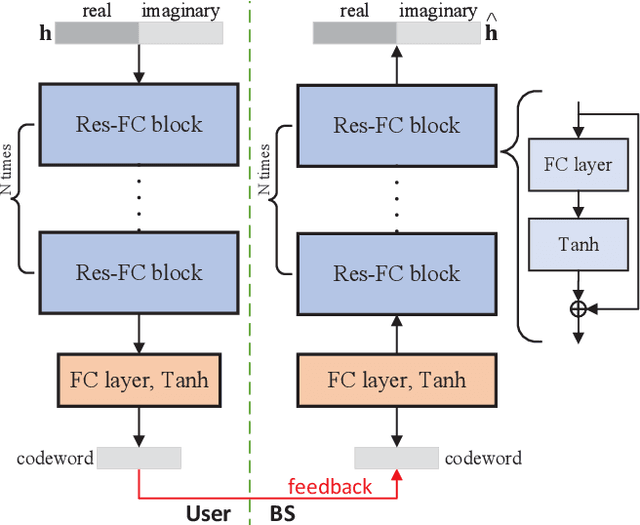
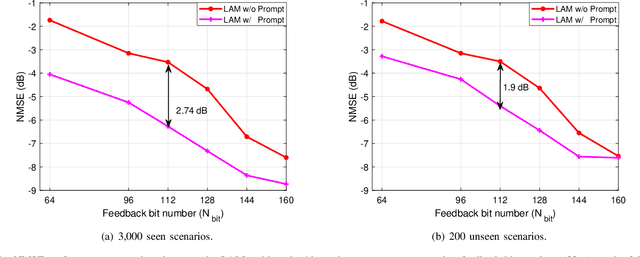
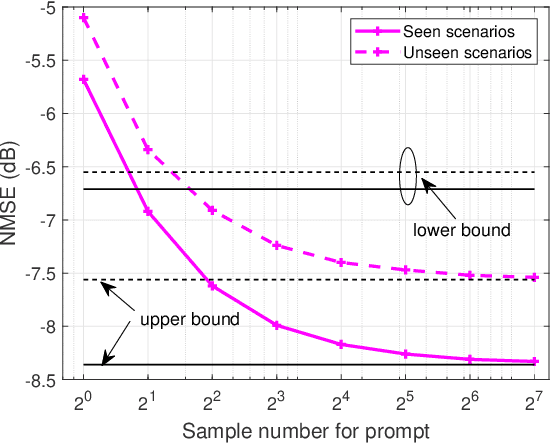
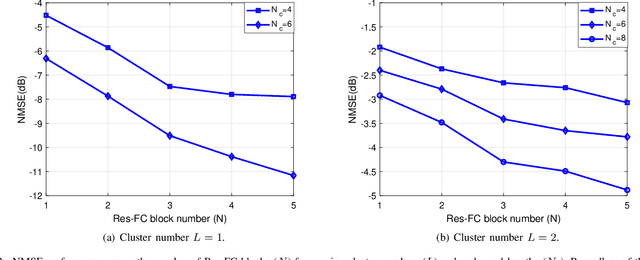
Abstract:Artificial intelligence (AI) has emerged as a promising tool for channel state information (CSI) feedback. While recent research primarily focuses on improving feedback accuracy through novel architectures, the underlying mechanisms of AI-based CSI feedback remain unclear. This study investigates these mechanisms by analyzing performance across diverse datasets and reveals that superior feedback performance stems from the strong fitting capabilities of AI models and their ability to leverage environmental knowledge. Building on these findings, we propose a prompt-enabled large AI model (LAM) for CSI feedback. The LAM employs powerful transformer blocks and is trained on extensive datasets from various scenarios. To further enhance reconstruction quality, the channel distribution -- represented as the mean of channel magnitude in the angular domain -- is incorporated as a prompt within the decoder. Simulation results confirm that the proposed prompt-enabled LAM significantly improves feedback accuracy and generalization performance while reducing data collection requirements in new scenarios.
Visualizing attention zones in machine reading comprehension models
Oct 28, 2024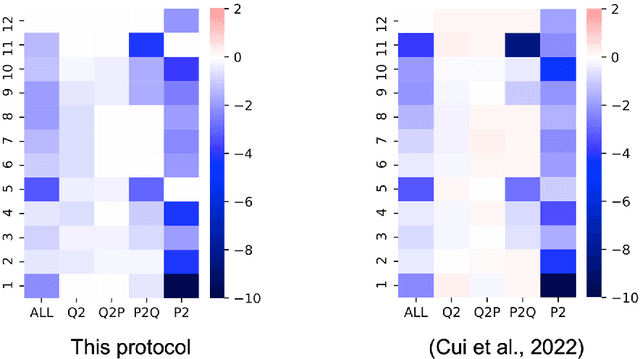
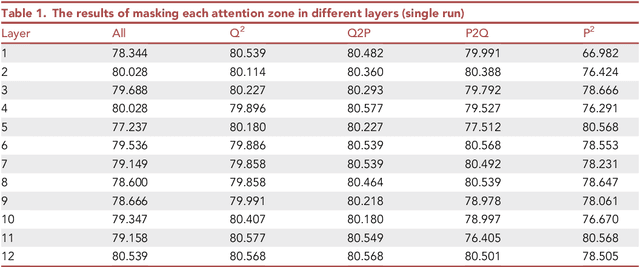
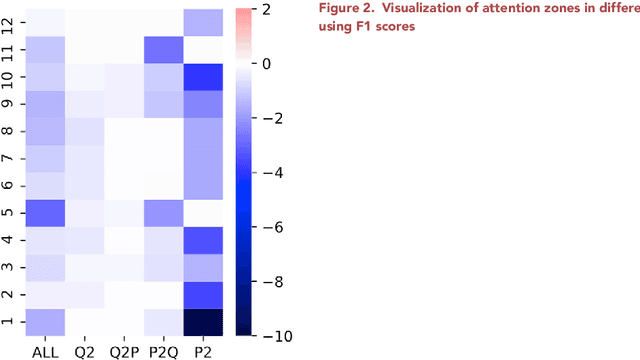
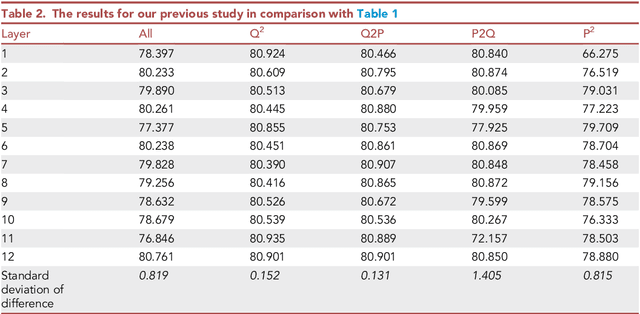
Abstract:The attention mechanism plays an important role in the machine reading comprehension (MRC) model. Here, we describe a pipeline for building an MRC model with a pretrained language model and visualizing the effect of each attention zone in different layers, which can indicate the explainability of the model. With the presented protocol and accompanying code, researchers can easily visualize the relevance of each attention zone in the MRC model. This approach can be generalized to other pretrained language models.
A Static and Dynamic Attention Framework for Multi Turn Dialogue Generation
Oct 28, 2024



Abstract:Recently, research on open domain dialogue systems have attracted extensive interests of academic and industrial researchers. The goal of an open domain dialogue system is to imitate humans in conversations. Previous works on single turn conversation generation have greatly promoted the research of open domain dialogue systems. However, understanding multiple single turn conversations is not equal to the understanding of multi turn dialogue due to the coherent and context dependent properties of human dialogue. Therefore, in open domain multi turn dialogue generation, it is essential to modeling the contextual semantics of the dialogue history, rather than only according to the last utterance. Previous research had verified the effectiveness of the hierarchical recurrent encoder-decoder framework on open domain multi turn dialogue generation. However, using RNN-based model to hierarchically encoding the utterances to obtain the representation of dialogue history still face the problem of a vanishing gradient. To address this issue, in this paper, we proposed a static and dynamic attention-based approach to model the dialogue history and then generate open domain multi turn dialogue responses. Experimental results on Ubuntu and Opensubtitles datasets verify the effectiveness of the proposed static and dynamic attention-based approach on automatic and human evaluation metrics in various experimental settings. Meanwhile, we also empirically verify the performance of combining the static and dynamic attentions on open domain multi turn dialogue generation.
* published as a journal paper at ACM Transactions on Information Systems 2023. 30 pages, 6 figures
Efficient Deep Learning-based Cascaded Channel Feedback in RIS-Assisted Communications
Sep 12, 2024Abstract:In the realm of reconfigurable intelligent surface (RIS)-assisted communication systems, the connection between a base station (BS) and user equipment (UE) is formed by a cascaded channel, merging the BS-RIS and RIS-UE channels. Due to the fixed positioning of the BS and RIS and the mobility of UE, these two channels generally exhibit different time-varying characteristics, which are challenging to identify and exploit for feedback overhead reduction, given the separate channel estimation difficulty. To address this challenge, this letter introduces an innovative deep learning-based framework tailored for cascaded channel feedback, ingeniously capturing the intrinsic time variation in the cascaded channel. When an entire cascaded channel has been sent to the BS, this framework advocates the feedback of an efficient representation of this variation within a subsequent period through an extraction-compression scheme. This scheme involves RIS unit-grained channel variation extraction, followed by autoencoder-based deep compression to enhance compactness. Numerical simulations confirm that this feedback framework significantly reduces both the feedback and computational burdens.
Self-Evolving GPT: A Lifelong Autonomous Experiential Learner
Jul 12, 2024



Abstract:To improve the performance of large language models (LLMs), researchers have explored providing LLMs with textual task-solving experience via prompts. However, they rely on manual efforts to acquire and apply such experience for each task, which is not feasible for the growing demand for LLMs and the variety of user questions. To address this issue, we design a lifelong autonomous experiential learning framework based on LLMs to explore whether LLMs can imitate human ability for learning and utilizing experience. It autonomously learns and accumulates experience through experience transfer and induction, categorizing the types of input questions to select which accumulated experience to employ for them. Experimental results on six widely used NLP datasets show that our framework performs reliably in each intermediate step and effectively improves the performance of GPT-3.5 and GPT-4. This validates the feasibility of using LLMs to mimic human experiential learning and application capabilities. Additionally, we provide a detailed analysis of the behavior of our framework at each step.
Deep Learning-based CSI Feedback in Wi-Fi Systems
Jul 08, 2024



Abstract:In Wi-Fi systems, channel state information (CSI) plays a crucial role in enabling access points to execute beamforming operations. However, the feedback overhead associated with CSI significantly hampers the throughput improvements. Recent advancements in deep learning (DL) have transformed the approach to CSI feedback in cellular systems. Drawing inspiration from the successes witnessed in the realm of mobile communications, this paper introduces a DL-based CSI feedback framework, named EFNet, tailored for Wi-Fi systems. The proposed framework leverages an autoencoder to achieve precise feedback with minimal overhead. The process involves the station utilizing the encoder to compress and quantize a series of matrices into codeword bit streams, which are then fed back to the access point. Subsequently, the decoder installed at the AP reconstructs beamforming matrices from these bit streams. We implement the EFNet system using standard Wi-Fi equipment operating in the 2.4 GHz band. Experimental findings in an office environment reveal a remarkable 80.77% reduction in feedback overhead compared to the 802.11ac standard, alongside a significant boost in net throughput of up to 30.72%.
ProMotion: Prototypes As Motion Learners
Jun 07, 2024



Abstract:In this work, we introduce ProMotion, a unified prototypical framework engineered to model fundamental motion tasks. ProMotion offers a range of compelling attributes that set it apart from current task-specific paradigms. We adopt a prototypical perspective, establishing a unified paradigm that harmonizes disparate motion learning approaches. This novel paradigm streamlines the architectural design, enabling the simultaneous assimilation of diverse motion information. We capitalize on a dual mechanism involving the feature denoiser and the prototypical learner to decipher the intricacies of motion. This approach effectively circumvents the pitfalls of ambiguity in pixel-wise feature matching, significantly bolstering the robustness of motion representation. We demonstrate a profound degree of transferability across distinct motion patterns. This inherent versatility reverberates robustly across a comprehensive spectrum of both 2D and 3D downstream tasks. Empirical results demonstrate that ProMotion outperforms various well-known specialized architectures, achieving 0.54 and 0.054 Abs Rel error on the Sintel and KITTI depth datasets, 1.04 and 2.01 average endpoint error on the clean and final pass of Sintel flow benchmark, and 4.30 F1-all error on the KITTI flow benchmark. For its efficacy, we hope our work can catalyze a paradigm shift in universal models in computer vision.
 Add to Chrome
Add to Chrome Add to Firefox
Add to Firefox Add to Edge
Add to Edge